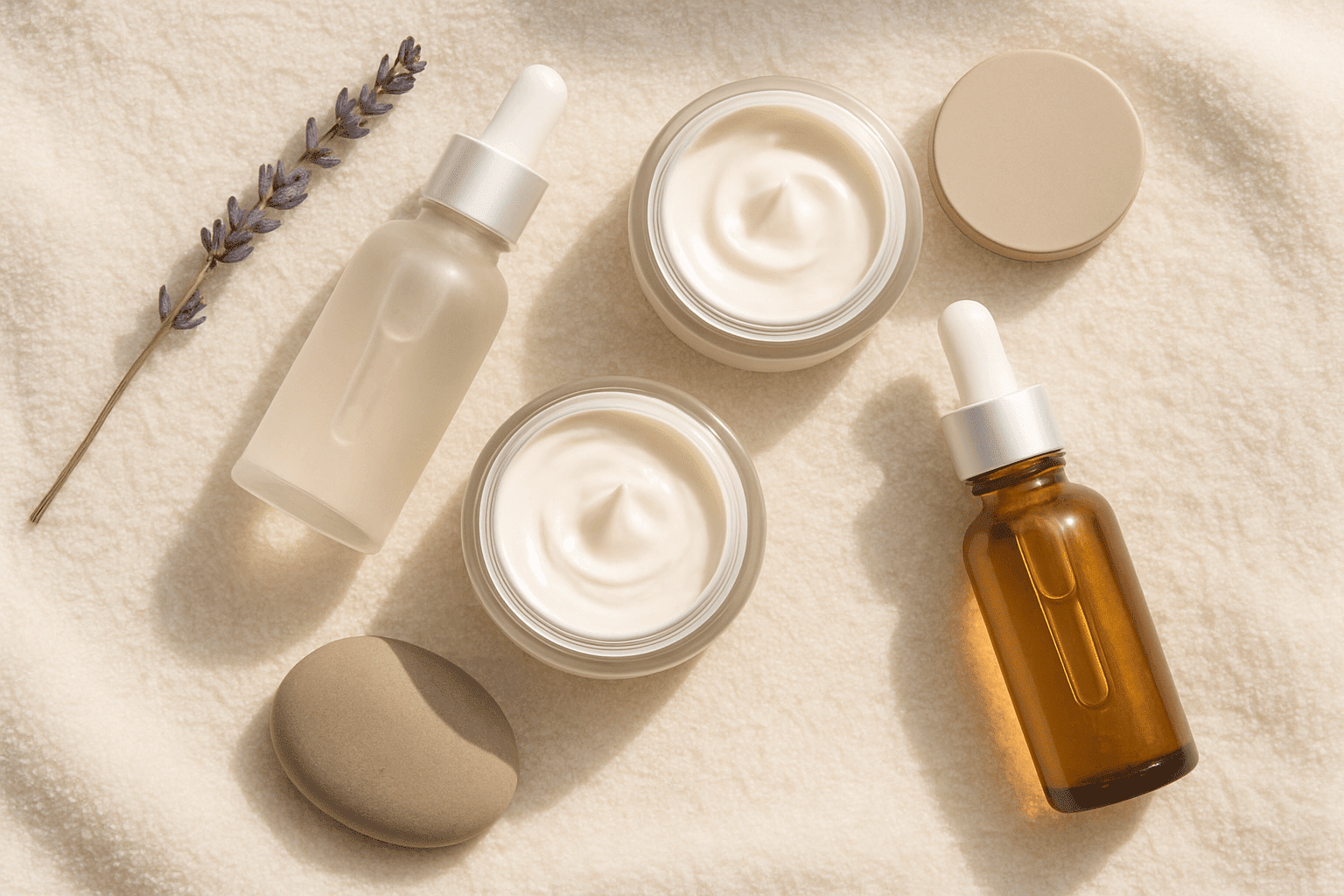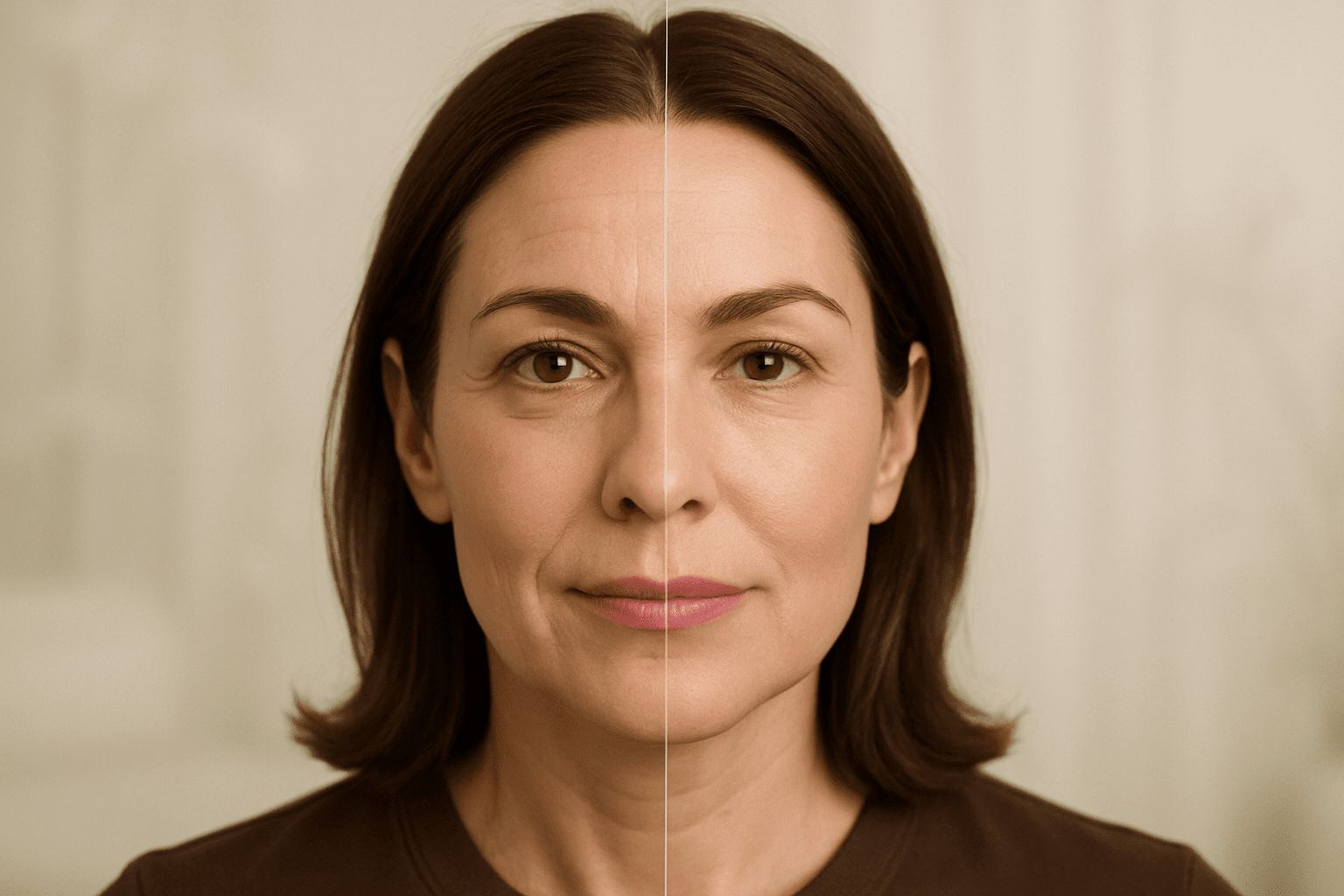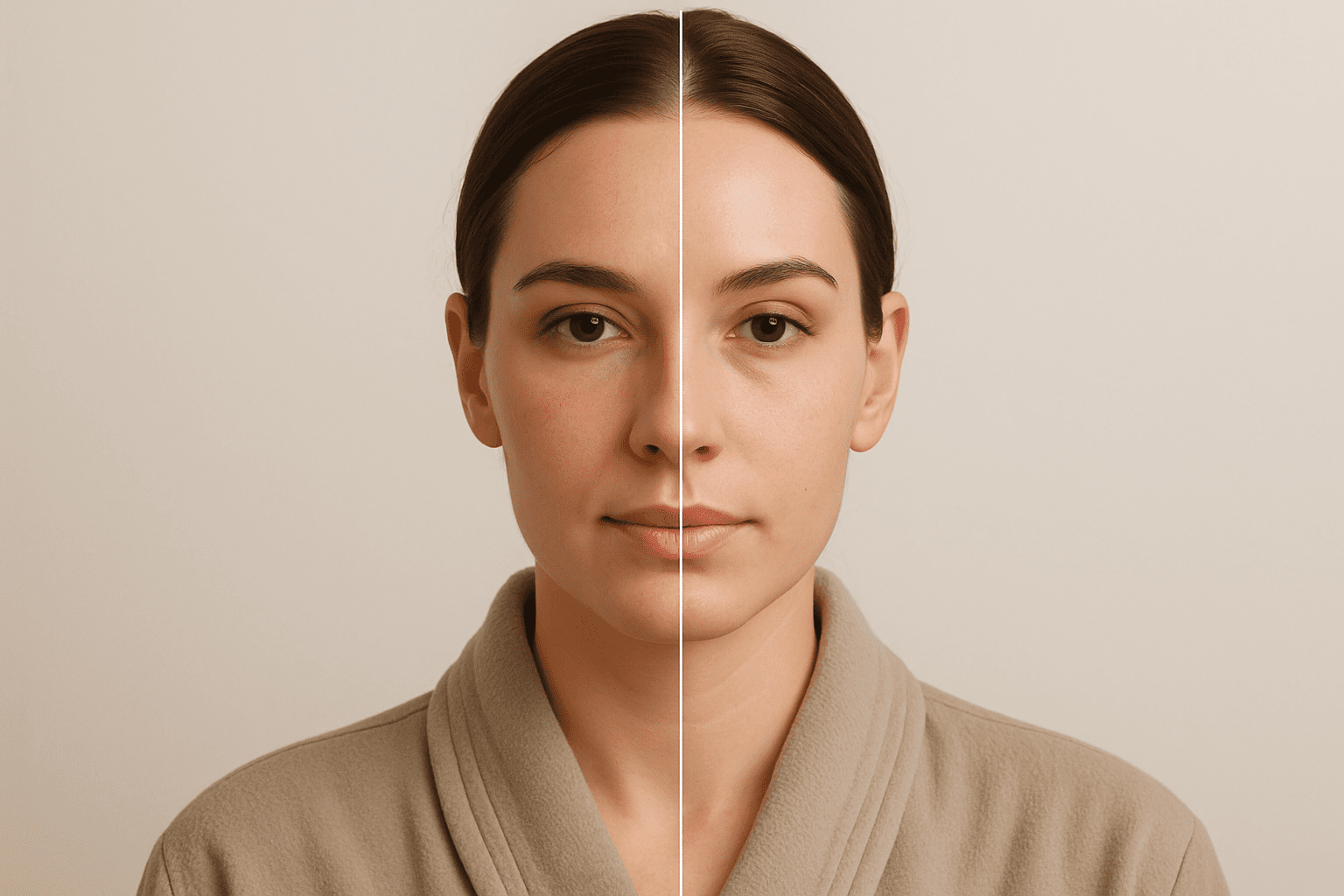Facials are no longer a once-a-year indulgence. With skin health now a daily conversation—thanks to TikTok dermatologists and Instagram influencers—knowing the difference between a Hydrafacial vs traditional facial can save you money, time, and maybe even your skin barrier.
Whether you’re trying to decongest your pores, improve texture, or just keep your glow on point, picking the right facial can make a world of difference. But with new tech like Hydrafacials entering the scene, traditional facials are no longer the default. So, what’s the real difference—and which one delivers the glow-up you’re looking for?
Jump To:
TLDR – Quick Guide
- Hydrafacial: A high-tech, multi-step treatment that uses suction, serums, and hydration to cleanse and rejuvenate skin.
- Traditional Facial: A customizable, hands-on treatment that may include steam, manual extractions, masks, and massage.
- Key Difference: Hydrafacials use a machine and patented technology; traditional facials rely on manual techniques and products.
- Downtime: Hydrafacial has little to none. Traditional facials may cause redness or irritation, especially after extractions.
- Best For: Hydrafacial is ideal for clogged pores and dullness; traditional facials are more adaptable and therapeutic.
Detailed Breakdown
What Is a Hydrafacial?
A Hydrafacial is a medical-grade resurfacing treatment that uses a patented vortex fusion device to cleanse, exfoliate, extract, and hydrate the skin—all in one session.
What It Includes:
- Deep cleansing with a water-based suction system
- Chemical exfoliation with glycolic and salicylic acids
- Painless vacuum-like extractions
- Infusion of antioxidants and peptides
It’s basically like a mini power wash for your face—with zero downtime.
Best For:
- Acne-prone or congested skin
- Dull or dehydrated complexions
- People short on time who want instant results
What Is a Traditional Facial?
A traditional facial is the OG spa treatment. It’s manual, customizable, and often includes a combination of the following:
- Cleansing and toning
- Steaming to open pores
- Manual or tool-assisted extractions
- Facial massage to stimulate circulation
- Custom masks based on your skin type
- Moisturizer and SPF to finish
Best For:
- Relaxation and stress relief
- Targeted skin concerns (like sensitivity or rosacea)
- Regular maintenance for healthy skin
Side-by-Side Comparison
| Feature | Hydrafacial | Traditional Facial |
| Technique | Machine-based | Hands-on |
| Deep Extractions | Yes, painless | Yes, often manual and may be uncomfortable |
| Customization | Moderate (serum selection) | High (fully tailored steps) |
| Downtime | None | Possible redness |
| Sensory Experience | Clinical | Spa-like |
| Duration | 30–60 minutes | 60–90 minutes |
| Cost | $150–$300 | $80–$200 |
| Skin Type Suitability | Most skin types | All skin types, especially sensitive |
Pros and Cons
Hydrafacial Pros:
- Instant glow with no redness
- Painless extractions
- Great for clogged pores and hydration
Hydrafacial Cons:
- Less customizable
- Pricier than basic facials
Traditional Facial Pros:
- Fully tailored experience
- Includes relaxing elements like massage
- Better for sensitive or reactive skin
Traditional Facial Cons:
- More risk of redness or breakouts post-treatment
- Manual extractions can be uncomfortable
Which Facial Is Right for You?
Choose Hydrafacial if you:
- Want visible results fast (e.g., before an event)
- Are dealing with blackheads or congestion
- Prefer a clinical, high-tech experience
Choose Traditional Facial if you:
- Crave a relaxing, spa-like treatment
- Need targeted care for specific skin conditions
- Want a lower-cost option with flexible customization
You can also rotate between both—use Hydrafacial monthly for deep cleaning, and schedule a traditional facial quarterly for skin nourishment and relaxation.
Key Takeaways
- A Hydrafacial is a no-downtime, machine-powered facial that deep-cleanses and hydrates the skin.
- A traditional facial is a hands-on, customizable treatment that balances results with relaxation.
- Hydrafacials are ideal for congestion and glow, while traditional facials shine in customizability and therapeutic benefits.
- Both have their place in a smart skincare strategy—it all depends on your needs, skin type, and preferences.
FAQs
1. Is a Hydrafacial better than a traditional facial?
Not necessarily—it depends on your goals. Hydrafacial is better for instant results and clearing pores, while traditional facials offer a holistic, tailored experience.
2. How often should I get each type of facial?
You can get a Hydrafacial monthly. Traditional facials are typically recommended every 4–6 weeks.
3. Does a Hydrafacial hurt?
No. It’s painless and often described as a gentle suction sensation with a cooling effect.
4. Can I wear makeup after a Hydrafacial?
Yes, but it’s best to let your skin breathe for at least 24 hours post-treatment.
5. Which facial is safer for sensitive skin?
A traditional facial can be more easily customized to avoid triggers for sensitive skin, making it a safer option for those prone to irritation.



